A Mars-sized planet was found just 31 light-years away, orbiting its star every eight hours and having 55 percent the mass of the Earth, leading scientists to conclude it’s mostly made of an iron-nickel core. Plus, water on Earth, a huge comet, and a review of a Canon lens.
Podcast
Show Notes
Simulations reveal ghost particles influence
- University of Tsukuba press release
- “A 400 trillion-grid Vlasov simulation on Fugaku supercomputer: large-scale distribution of cosmic relic neutrinos in a six-dimensional phase space,” Kohji Yoshikawa, Satoshi Tanaka, and Naoki Yoshida, 2021 November 14, SC ’21: Proceedings of the International Conference for High Performance Computing, Networking, Storage and Analysis
Dinosaurs point to new lay of the land
- A dinosaur trove in Italy rewrites the history, geography, and evolution of the ancient Mediterranean area (EurekAlert)
- “An Italian dinosaur Lagerstätte reveals the tempo and mode of hadrosauriform body size evolution,” Alfio Alessandro Chiarenza et al., 2021 December 2, Scientific Reports
Glass beads made by space tell of solar system formation
- The University of Chicago press release
- “Imprint of chondrule formation on the K and Rb isotopic compositions of carbonaceous meteorites,” Nicole X. Nie et al., 2021 December 1, Science Advances
Water, water everywhere… but why?
- University of Hawai‘i at Mānoa press release
- “Solar wind contributions to Earth’s oceans,” Luke Daly et al., 2021 November 29, Nature Astronomy
Huge, distant comet already active with a coma
- University of Maryland press release
- “Early Activity in Comet C/2014 UN271 Bernardinelli–Bernstein as Observed by TESS,” Tony L. Farnham, Michael S. P. Kelley and James M. Bauer, 29 November 2021, The Planetary Science Journal
TESS finds lightweight Mars-sized world
- DLR Institute of Planetary Research press release
- MIT press release
- “GJ 367b: A dense, ultrashort-period sub-Earth planet transiting a nearby red dwarf star,” Kristine W. F. Lam et al., 2021 December 2, Science
Transcript
Hello and welcome to the Daily Space. I am your host Dr. Pamela Gay.
And I am your host Erik Madaus.
And we are here to put science in your brain.

In today’s first story, we’re going to call attention to the powerful role of computers in shaping our understanding of the universe and, in this case, in shaping our understanding of the shape of the universe.
Since the beginning of the computer age, researchers have been trying to simulate how a universe made of a mostly smooth swarm of particles can, over time, evolve into the galaxies and large-scale structures that we see today. Early models started by simulating increasingly large numbers of particles of regular material – the kinds of baryonic matter that make up us and everything we touch. Those simulations didn’t work really well – something was missing.
Dark matter was added, and folks began fussing with how dark matter might be one temperature and the regular matter another, and models matched better, but the processing required got harder and harder since these two kinds of particles interact gravitationally but not so much collisionally, and the software had to keep everything straight. Still, it was progress.
But there was still stuff missing – neutrinos for instance – and that stuff interacts more like dark matter than regular matter but is constantly coming into and out of existence through formation in stars and destruction in rare interactions. These ghost particles, as they’ve been nicknamed, are in the universe tweaking its evolution. As explained by project principal investigator Naoki Yoshida: …these particle-based methods cannot accurately reproduce collisionless damping—a key process in which fast-moving neutrinos suppress the growth of structure in the Universe.
So his team created a simulation that included neutrinos: a simulation that ran on up to 147,456 nodes of seven million CPU cores. And their new universe in a digital box got that much closer to resembling the actual universe.
What got me about this work is that neutrinos aren’t just hanging out in our normal x,y,z+time universe. Including them required solving what’s called the Vlasov equation in six dimensions. Since our universe has at least eleven dimensions, models will still need to grow, but this is amazing progress.
I can’t wait to see what folks can create when we have quantum computers.
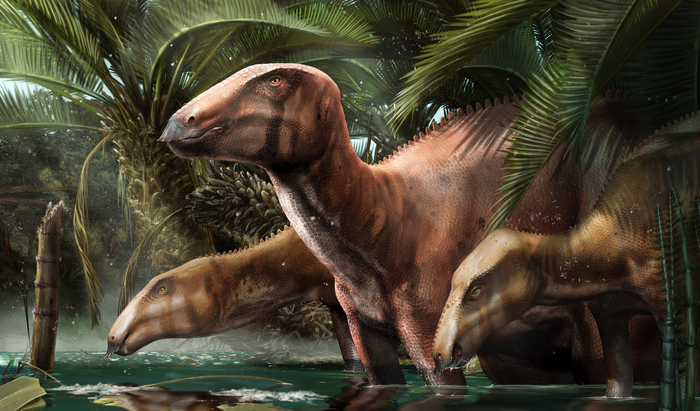
From trying to understand how the structure of the universe has changed, we now turn to look at how the structure of the land has changed over time. Our world’s continents have always been on the move, and volcanic lands have risen up out of the sea only to be worn away with time and sunk back into the water. We can see how the crust once fit together by looking at how fossils match on lands that no longer touch. Understanding the more islandy bits has been more of a challenge.
But sometimes you get lucky.
The boot of Italy is a seismically active region rife with volcanoes. If you want to go searching for old human relics but not truly ancient relics, Italy is a good place to go. If you want dinosaur bones, then Montana. You want to go to Montana or China or other continental landscapes.
It was thought that during the age of the dinosaurs, modern Italy was nothing more than a series of islands incapable of supporting large dinosaurs, but it turns out we were wrong.
During a dig in the Villaggio del Pescatore site, University of Bologna researchers found multiple skeletons of the Tethyshadros insularis dinosaur as well as fossil remains of fish, crocodiles, flying reptiles, and crustaceans. These discoveries indicate that eighty million years ago, that land that became Italy was not only small islands that characterized the ancient Mediterranean, but many migratory routes for large terrestrial animals like the dinosaurs might have been possible across land bridges of what we now call Italy.
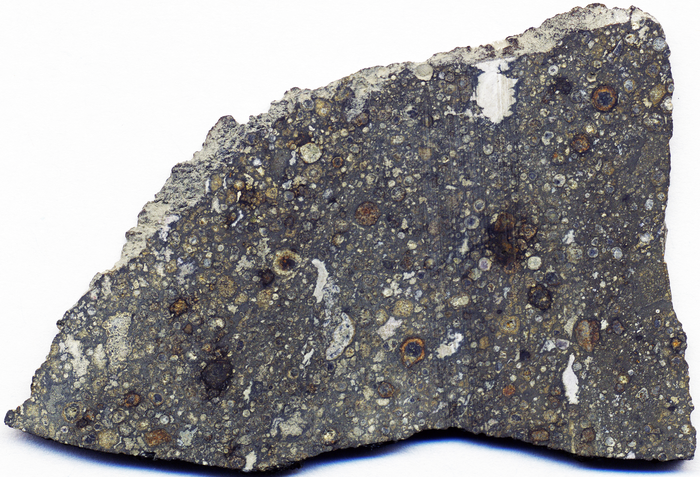
A remarkably large part of science is just noticing that what you have isn’t what you expect.
Meteorites can do a really good job of pretending to be regular rocks, but they aren’t, and when we can spot them for what they are, the science inside them allows us to get at information we could otherwise only get by sending spacecraft out to collect samples.
While a lot of meteorites go uncollected, sometimes we get lucky, the meteors are seen falling to Earth, and we can follow the fireball in the sky to the rocks on the ground. Such was the case with the Allende Meteorite which exploded over the Chihuahuan desert in 1969 and scattered two tonnes of material across the landscape. This fragmented space rock is a mix of metals, minerals, and even glass beads that formed in the earliest days of our forming solar system.
The structure of these beads reveals the conditions under which they were formed, and these beads describe violent collisions followed by rapid cooling at a rate of 500 degrees Celsius per hour! According to Nicolas Dauphas, project principal investigator, one scenario that fits would be massive shockwaves passing through the early nebula: Large planetary bodies nearby can create shocks, which would have heated and then cooled the dust as it passed through.
These early shocks may be responsible for the loss of somewhat volatile elements like potassium and rubidium in the Earth, where they don’t exist in expected amounts. It turns out there is a lot to be learned from glass beads from space!
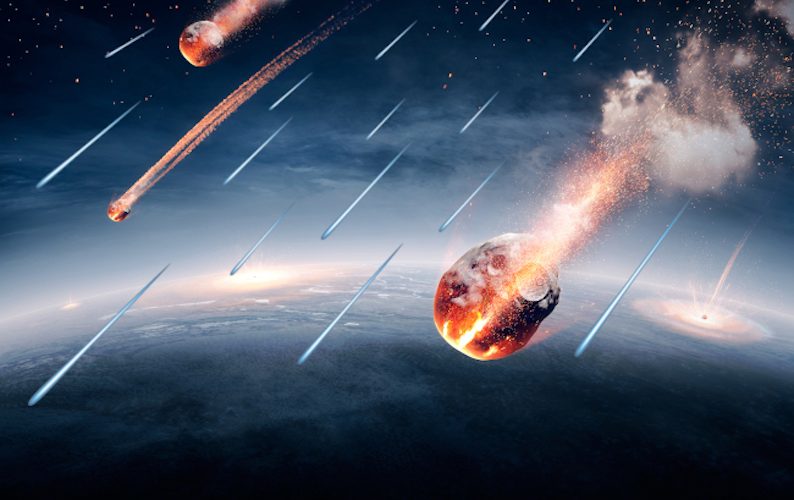
Meteorites are useful for answering all kinds of questions, including why is there so much water on Earth? One theory that has been gaining steam, so to speak, is that some of the liquid water we have on Earth comes from water-rich meteorites. But the isotopes didn’t always match, particularly when it comes to water in the mantle and oceans. So perhaps some of our water is a result of our planet being bombarded by dust grains that came from asteroids and comets, where those dust grains contained water. And upon analyzing a different type of asteroid than the ones that give us those water-rich meteorites, including Itokawa which was sampled by JAXA’s Hayabusa probe, they found water molecules that isotopically matched what we were missing.
As scientists have worked to understand this process, a question remained about just how the water got into the dust grains. In a new paper in Nature Astronomy, a team lead by Luke Daly has concluded that the water came from space weathering, where charged particles from the Sun traveled through the solar system via the solar wind and altered the chemical composition of the original dust grains so that they now contained water.
Daly explains further: Over time, the ‘space weathering’ effect of the hydrogen ions can eject enough oxygen atoms from materials in the rock to create H2O – water – trapped within minerals on the asteroid. Crucially, this solar wind-derived water produced by the early solar system is isotopically light. That strongly suggests that fine-grained dust, buffeted by the solar wind and drawn into the forming Earth billions of years ago, could be the source of the missing reservoir of the planet’s water.
In simple terms: the solar wind is producing water under the surface of asteroids, and that water made it to Earth. Co-author John Bradley notes: Since much of the dust throughout the solar nebula was inevitably irradiated prior to its accretion into larger objects, water produced by this mechanism is highly relevant to the origin of water in planetary systems and possibly the isotopic composition of Earth’s oceans.”
And maybe we could use dust on other worlds like Ceres or Vesta or even the Moon to process water straight from the surface. That’s an interesting idea for in situ resource utilization, I think.
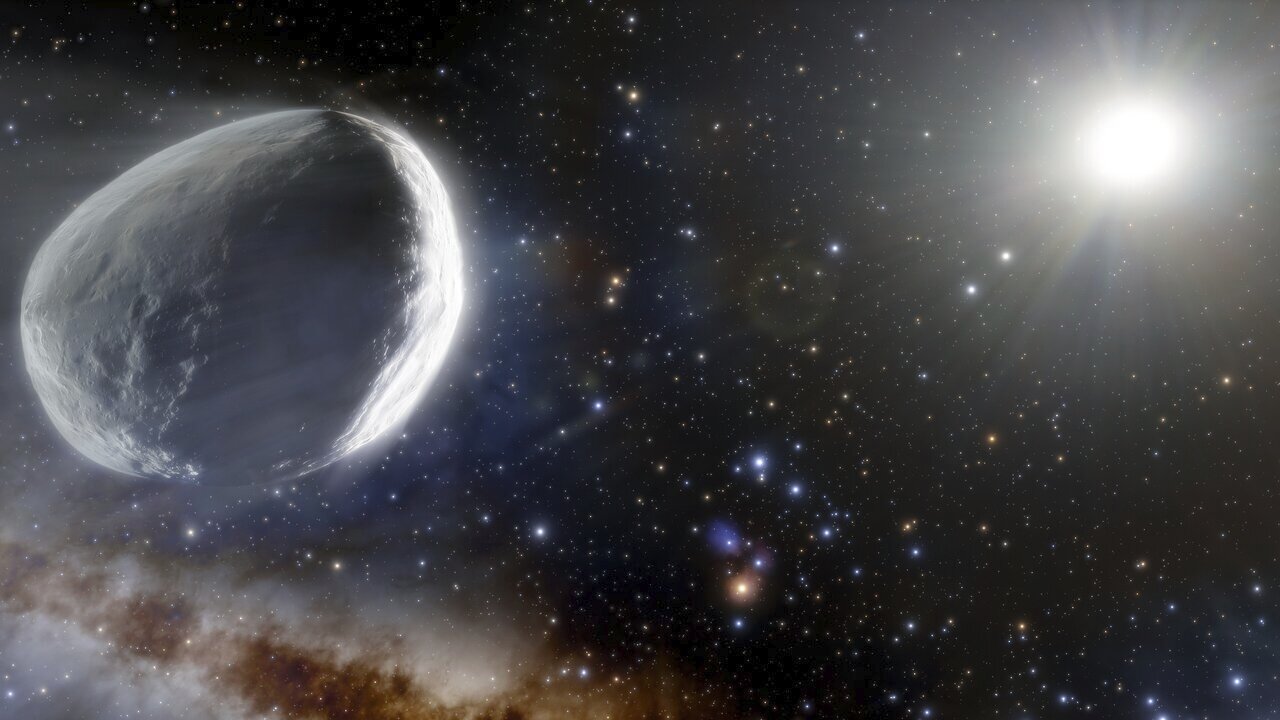
Speaking of asteroids and comets, astronomers are still working to understand that huge comet that was recently discovered and led Beth to yell at headline writers. Comet Bernardinelli-Bernstein was discovered back in June of this year in data from the Dark Energy Survey, which has been working to survey the Southern Hemisphere’s sky.
While most comets are about one kilometer across, this particular comet is estimated at 100 kilometers across, making it the largest comet ever discovered. Right now, comet BB is out past the orbit of Uranus, but it’s expected to come close to Saturn’s orbit before heading back out toward the Kuiper Belt. So it’s not a threat to Earth, or even Saturn, but its size has made it an unusual subject of interest for planetary scientists.
We’ve talked about the differences between an asteroid and a comet on this show, and on Astronomy Cast, before, but the basic point remains that they are essentially the same type of rocky body. Comets, however, are considered active when the ices in their structure begin to vaporize as they approach the Sun and get warmer. These ices can be a variety of types: water, carbon dioxide, carbon monoxide, etc. Each type of ice vaporizes at a different temperature. And with comet BB being so far away but still so large, astronomers led by Tony Farnham wondered if the comet was already active despite its distance.
Unfortunately, the Dark Energy Survey images did not have the resolution necessary to say for certain one way or another if comet BB is vaporizing, so the team turned to data gathered by NASA’s TESS spacecraft. They stacked the images taken, confirmed their accuracy, and found that yes, comet BB is surrounded by a hazy glow indicating the sublimation of ice. And due to the distance, the ice being sublimated is likely carbon monoxide. The results were published in The Planetary Science Journal.
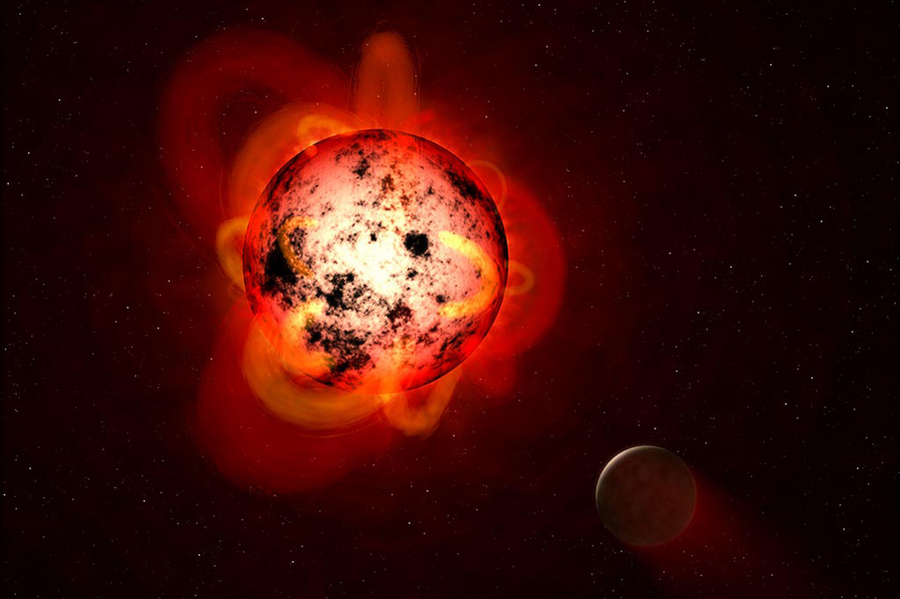
Speaking of TESS, this mission continues to find the strange and different when it comes to exoplanets. A new paper was published in Science this week that details the discovery of a planet about the size of Mars, called GJ 367b, that orbits its star in a blistering eight hours. So mark another one in your sub-Earth column and in your ultra-short-period column, just in case you’re counting.
But wait! There’s more. This relatively small world is close enough to its star that scientists could actually calculate its mass, and now we get to the even more interesting part: GJ 367b is a rocky world with a similar composition to Mercury and a solid core of iron and nickel, possibly making up as much as 86 percent of the interior.
TESS observed the parent star’s patch of the sky back in 2019, with the planet showing up as a dip in the star’s light. Astronomers confirmed the planet using the High Accuracy Radial Velocity Planet Searcher (HARPS) instrument at the ESO’s telescope in Chile. From there, the team analyzed all of the data to calculate the various characteristics of GJ 367b.
Mind you this is not a habitable planet in the slightest. While the star is a red dwarf, the planet is still getting blasted by 500 times more radiation than the Earth gets from our Sun. And with that close orbit, daytime temperatures are up around 1,500 degrees Celsius.
However, it is very possible that this small world has a family since red dwarf stars typically tend to have multi-planet systems. And some of those family members could be more habitable to life. And with the parent star being only 31 light-years away from our solar system, this system is one to keep an eye, or rather a spacecraft’s eye, on.
Review
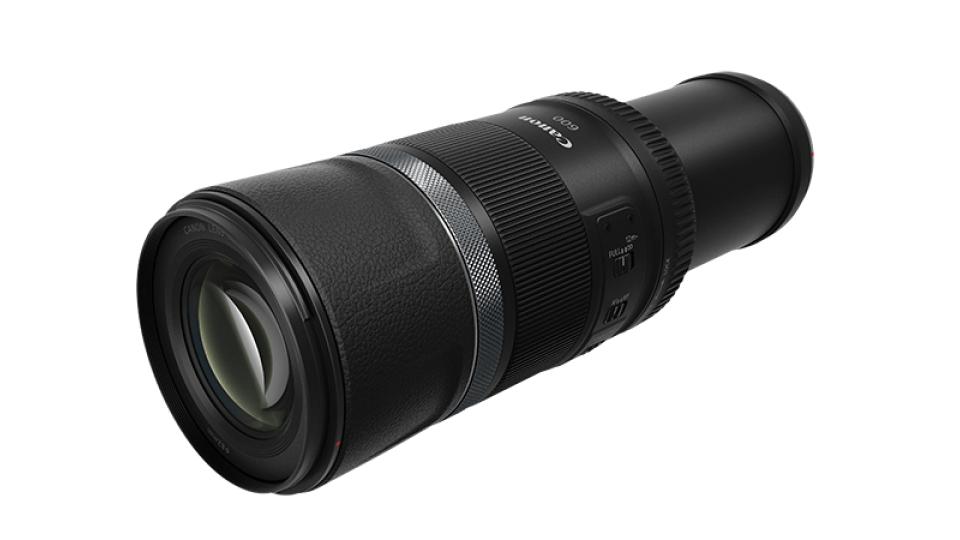
Another lens review this week, and it’s one more for Canon’s full-frame mirrorless RF mount: the Canon RF 600mm f/11 super-telephoto lens. One of my main interests is wildlife photography, which is why I bought one of these for myself a few months ago.
Now the first thing you may notice about the lens is that smaller aperture of f/11. This really isn’t a concern with modern digital sensors that perform well at higher ISO settings, such as those that you might need to use with a slower lens.
The Canon RF 600mm f/11 lens is intended for wildlife photographers on a budget. Weighing just 930 grams means you can leave the monopod at home. The lens has optical image stabilization which has allowed me to shoot sharp images at 1/15th of a second without needing a monopod.
The autofocus is pretty fast. When shooting birds, it tends to hunt for focus a lot before locking on, but I’m pretty sure that is because of user error and the limitations of the autofocus capabilities of my entry-level Canon EOS RP, as I see this with other lenses, too.
The lens has three switches on the side and separate focus and control rings. The switches control focus distance limiting, image stabilization, and focus mode. Like with all R-system cameras, manual focus override is only available if you set the camera upright. If you grab the manual focus ring with autofocus set, it does nothing since the manual focus ring is an encoder that tells the autofocus motor how much to move.
A downside of the aperture is you can only use about the center eighty percent of the frame to autofocus compared to all the way to the edge as with other lenses, an advantage of the mirrorless design. it’s not that big of a deal, at least for me.
Another feature of the RF 600mm f/11 is its collapsible design. It gets about eight centimeters shorter, which is good for storage in a reasonably-sized camera bag. There’s a locking ring at the base of the lens that you must put in its closed position before using the lens, but that becomes muscle memory after a while. It has a fixed ¼ 20 threaded hole for attaching a quick release plate for a monopod instead of a removable tripod shoe like on other super-telephoto lenses. I don’t use a monopod since this lens is stabilized, so I put a strap mounting plate on the thread. I learned early on that it’s more comfortable to have cameras with large lenses facing backward as you’re walking, and that’s mostly true with this lens, though the balance is a little off because half of it is a hollow tube.

Image quality with the 600mm f/11 is great. The Diffractive Optics design works; there isn’t any visible distortion or chromatic aberration, and what small aberrations there are are corrected automatically in-camera. Because of the smaller aperture, you need to use higher ISOs to be able to use fast shutter speeds. I regularly use up to ISO 12,800 without a significant decrease in image quality, so I limit the ISO to that using the Auto ISO setting. I’m really happy with the images I can make with it given all of its advantages and compromises. Enthusiasts on a budget like me don’t usually get this much focal length.
Personally, I don’t use teleconverters but you can use one of the available RF teleconverters, which Canon calls “Extenders”, with the 600mm f/11 to obtain either 840mm at f/16 or 1200mm at f/22, using the 1.4x or 2x teleconverters respectively, though Canon notes that the lens might not autofocus at f/22 using the 2x converter.
Although Canon also makes a big brother to this lens, an 800mm f/11, I decided to get the 600mm version mainly because of its shorter minimum focus distance of 4.5 meters, compared to the 6 meters on the 800mm, which felt limiting to me because I might end up too close to the subject to focus and scare it off by backing away. As it stands, the first time I used this lens, I had to back up to get my subject in focus because I was closer than 4.5 meters.
Another consideration was the size. The 800mm version is about 40% longer than the 600mm, measuring at 281mm when retracted compared to the 199mm of the 600mm. In addition to being smaller than the 800mm version, I can use more affordable 82mm filters, compared to the more expensive 95mm filters used by the 800mm lens. But the biggest consideration for me was the price. At $699, the 600mm f/11 fit my budget compared to $899 for the 800mm f/11 model.
This has been the Daily Space.
You can find more information on all our stories, including images, at DailySpace.org. As always, we’re here thanks to the donations of people like you. If you like our content, please consider joining our Patreon at Patreon.com/CosmoQuestX.
Credits
Written by Pamela Gay, Beth Johnson, and Erik Madaus
Hosted by Pamela Gay and Erik Madaus
Audio and Video Editing by Ally Pelphrey
Content Editing by Beth Johnson
Intro and Outro music by Kevin MacLeod, https://incompetech.com/music/


 We record most shows live, on Twitch. Follow us today to get alerts when we go live.
We record most shows live, on Twitch. Follow us today to get alerts when we go live.